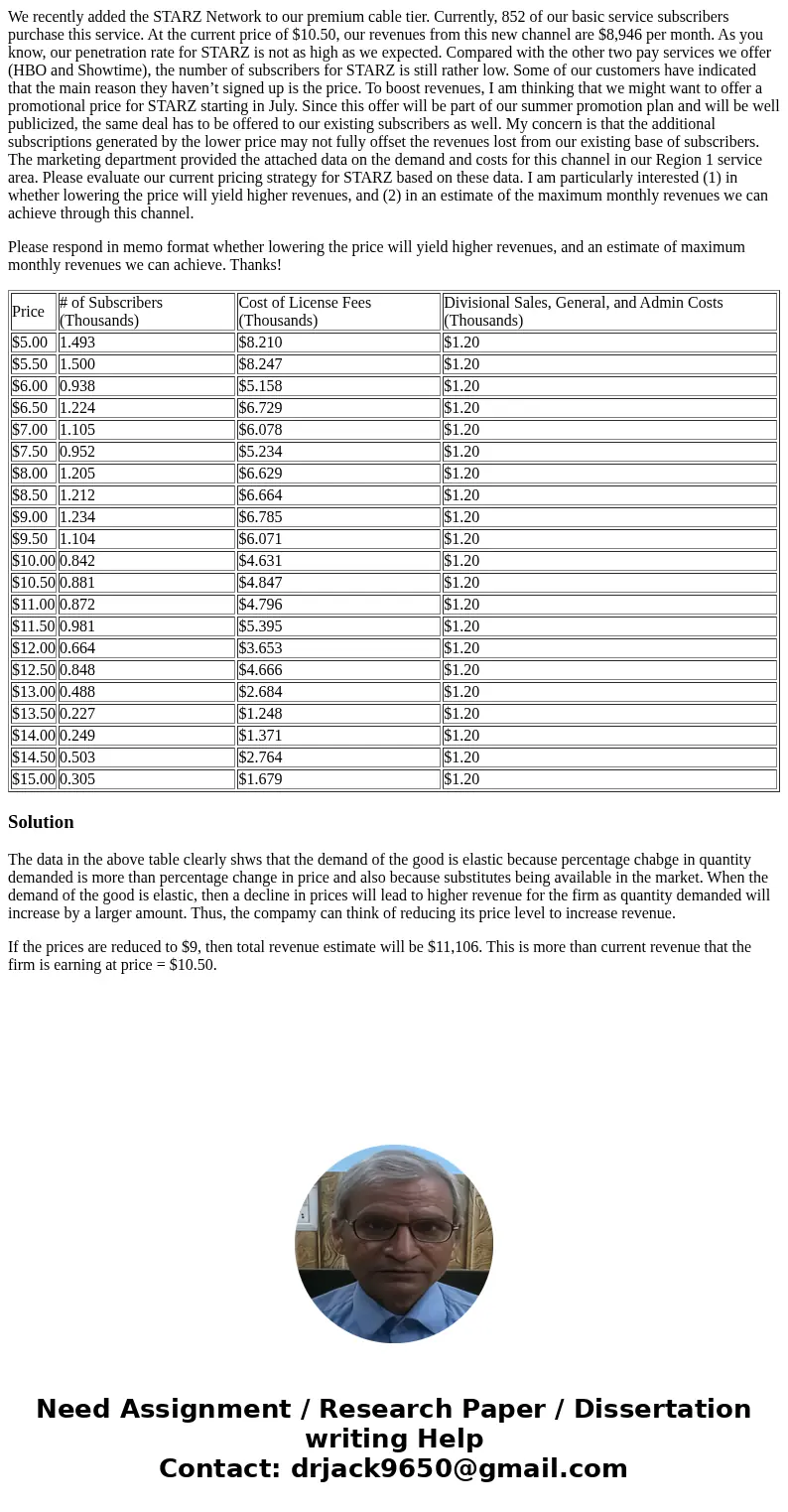We recently added the STARZ Network to our premium cable tie
We recently added the STARZ Network to our premium cable tier. Currently, 852 of our basic service subscribers purchase this service. At the current price of $10.50, our revenues from this new channel are $8,946 per month. As you know, our penetration rate for STARZ is not as high as we expected. Compared with the other two pay services we offer (HBO and Showtime), the number of subscribers for STARZ is still rather low. Some of our customers have indicated that the main reason they haven’t signed up is the price. To boost revenues, I am thinking that we might want to offer a promotional price for STARZ starting in July. Since this offer will be part of our summer promotion plan and will be well publicized, the same deal has to be offered to our existing subscribers as well. My concern is that the additional subscriptions generated by the lower price may not fully offset the revenues lost from our existing base of subscribers. The marketing department provided the attached data on the demand and costs for this channel in our Region 1 service area. Please evaluate our current pricing strategy for STARZ based on these data. I am particularly interested (1) in whether lowering the price will yield higher revenues, and (2) in an estimate of the maximum monthly revenues we can achieve through this channel.
Please respond in memo format whether lowering the price will yield higher revenues, and an estimate of maximum monthly revenues we can achieve. Thanks!
| Price | # of Subscribers (Thousands) | Cost of License Fees (Thousands) | Divisional Sales, General, and Admin Costs (Thousands) |
| $5.00 | 1.493 | $8.210 | $1.20 |
| $5.50 | 1.500 | $8.247 | $1.20 |
| $6.00 | 0.938 | $5.158 | $1.20 |
| $6.50 | 1.224 | $6.729 | $1.20 |
| $7.00 | 1.105 | $6.078 | $1.20 |
| $7.50 | 0.952 | $5.234 | $1.20 |
| $8.00 | 1.205 | $6.629 | $1.20 |
| $8.50 | 1.212 | $6.664 | $1.20 |
| $9.00 | 1.234 | $6.785 | $1.20 |
| $9.50 | 1.104 | $6.071 | $1.20 |
| $10.00 | 0.842 | $4.631 | $1.20 |
| $10.50 | 0.881 | $4.847 | $1.20 |
| $11.00 | 0.872 | $4.796 | $1.20 |
| $11.50 | 0.981 | $5.395 | $1.20 |
| $12.00 | 0.664 | $3.653 | $1.20 |
| $12.50 | 0.848 | $4.666 | $1.20 |
| $13.00 | 0.488 | $2.684 | $1.20 |
| $13.50 | 0.227 | $1.248 | $1.20 |
| $14.00 | 0.249 | $1.371 | $1.20 |
| $14.50 | 0.503 | $2.764 | $1.20 |
| $15.00 | 0.305 | $1.679 | $1.20 |
Solution
The data in the above table clearly shws that the demand of the good is elastic because percentage chabge in quantity demanded is more than percentage change in price and also because substitutes being available in the market. When the demand of the good is elastic, then a decline in prices will lead to higher revenue for the firm as quantity demanded will increase by a larger amount. Thus, the compamy can think of reducing its price level to increase revenue.
If the prices are reduced to $9, then total revenue estimate will be $11,106. This is more than current revenue that the firm is earning at price = $10.50.

 Homework Sourse
Homework Sourse